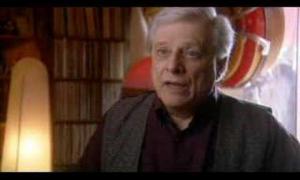How to turn your speeches into conversations
March 30, 2016
Step one: Study Orson Welles
If you can talk, you can get anything you want—anything.
If you doubt the truth of this assertion, think of speech-making as a form of seduction by other means; the use of words instead of material blandishments like jewels and champagne, or high-end fashion and elegant evening wear, in which the narration of sentences—from ornate and polished gemstones of prose to staccato lines of poetry—enraptures an audience through the power of your instrument, your voice, and its range of thunderous authority, breathless intimacy and seamless quality.
Now, ask yourself this question: Can you really talk?
For that skill is at the heart of an FDR-style fireside chat, or a Reagan-like ability to be a Great Communicator.
Notice the significance of that appellation. There is no mention of the Great Orator, though President Reagan could—and did—deliver orations aplenty.
Nor is there any reference to either man as the Great Speaker, though each could—and did—speak with reverence toward God and country.
To chat or communicate, however, is to do just that: To radiate charm and optimism by having a conversation through the medium of radio, TV or a live studio audience.
The “conversation” is of the monologist’s kind, a thematic address with the timing—including the calculated pauses, brief digressions and peroration of a major speech—that begets a performance.
What the speaker owes the listener is theatricality: The extended hand of peace, the pounding fist of justice, the impromptu call for unity, the extemporaneous summons to freedom—“Let them come to Berlin”—and the demand for liberty, “Mr. Gorbachev, tear down this wall!”
A conversationalist does these things by speaking with, not at or to, those gathered before him.
Put another way, we cannot have a “rendezvous with destiny” when the speaker acts like he has an appointment with his dentist.
When your conversation devolves into a recitation of statistics, when you read from a TelePrompTer like a hostage repeating the manifesto of his captors, expect to hear the yawns of an unfriendly audience—held prisoner not by the eloquence of your speech, but the tedium of your delivery, the monotony of your tone and the excessive length of your prepared remarks.
When I think of another conversationalist, perhaps the best example of this combination of artistry and personality, I hear the unmistakable baritone of Orson Welles.
His speech celebrating Jimmy Stewart, where he describes the latter as an “evergreen” of talent and independence, should be mandatory viewing for every speechwriter and speaker.
Welles sets the standard by channeling the totality of his own career, from youthful magician to radio announcer and master hoaxer to screenwriter and actor to celebrity emcee and frequent talk show guest.
A conversationalist to the very end, or near to the very end (having appeared on The Merv Griffin Show hours before his death), Welles is a raconteur of the first order, recalling stories about his films, his women and his life.
His advice on working an audience is invaluable, too.
Through taming an audience—by dealing with the attendees, by dominating them, by exciting them or by winning them to your side—a speaker has that Wellesean magic.
Always give your audience your magic.



